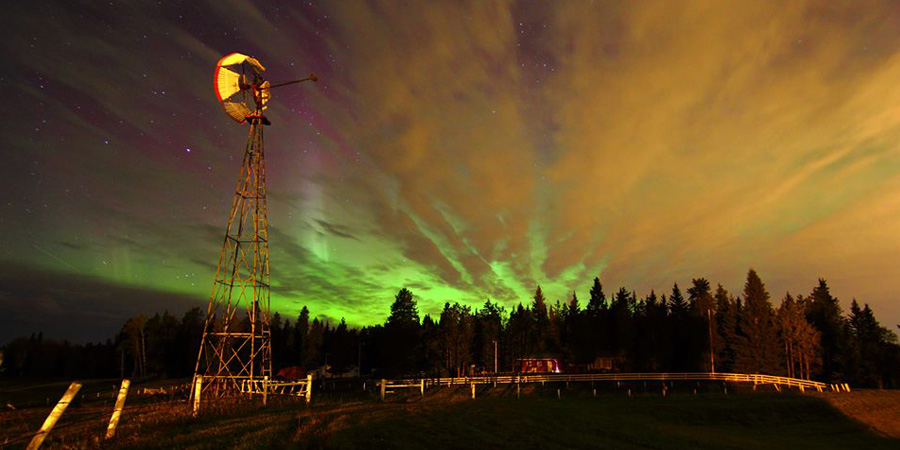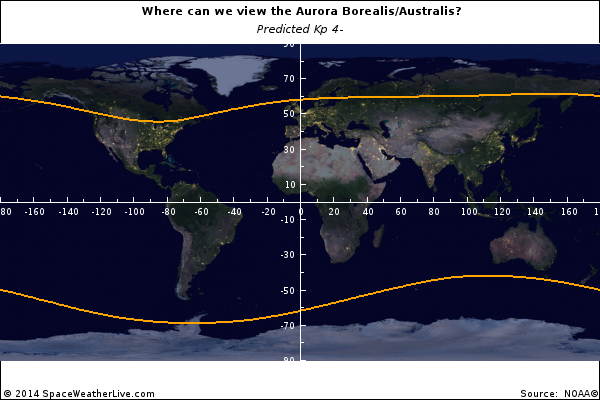Elevated geomagnetic conditions
Tuesday, 30 September 2014 17:16 UTC

Geomagnetic conditions continue to be elevated as we remain under the influence of coronal hole effects. The direction of the IMF is mostly south which caused enough geomagnetic instability for the Kp-index to reach active levels (Kp4) over the past 24 hours. Aurora filled the skies over many high latitude locations during local night time. Coronal hole effects continue today and more aurora is possible at high latitude locations. Header image: aurora last night as captured by Zack Splaine from Alberta, Canada.
A quick look at the current solar wind stats show that the numbers are actually not all that exciting but it is the direction of the IMF that is causing elevated geomagnetic conditions. The direction of the IMF remains southward near -5nT for prelonged periods and this stirs up aurora at high latitude locations. Kp-values up to 4 remain possible in the hours ahead.

Image: The Kp-index as a global aurora indicator
Solar activity
Solar activity has been low today with only C-class activity. Sunspot regions 2175, 2172 and 2173 are now rotating away from Earth and are in a state of decay. All three sunspot regions remain complex enough for an isolated M-class event as they rotate out of Earth's view but any associated coronal mass ejection will likely be directed away from Earth.
The only sunspot group of interest from the sunspot groups that will face Earth the coming days is sunspot group 2177. This sunspot group has a modest Beta-Gamma magnetic layout. It could produce an isolated low-level (R1) M-class solar flare but the chances are still low.
Thank you for reading this article! Did you have any trouble with the technical terms used in this article? Our help section is the place to be where you can find in-depth articles, a FAQ and a list with common abbreviations. Still puzzled? Just post on our forum where we will help you the best we can!
Latest news
Latest forum messages
Support SpaceWeatherLive.com!
A lot of people come to SpaceWeatherLive to follow the Sun's activity or if there is aurora to be seen, but with more traffic comes higher server costs. Consider a donation if you enjoy SpaceWeatherLive so we can keep the website online!

Space weather facts
| Last X-flare | 2024/12/08 | X2.2 |
| Last M-flare | 2024/12/23 | M1.0 |
| Last geomagnetic storm | 2024/12/17 | Kp5+ (G1) |
| Spotless days | |
|---|---|
| Last spotless day | 2022/06/08 |
| Monthly mean Sunspot Number | |
|---|---|
| November 2024 | 152.5 -13.9 |
| December 2024 | 106.6 -45.9 |
| Last 30 days | 116.1 -41.8 |


